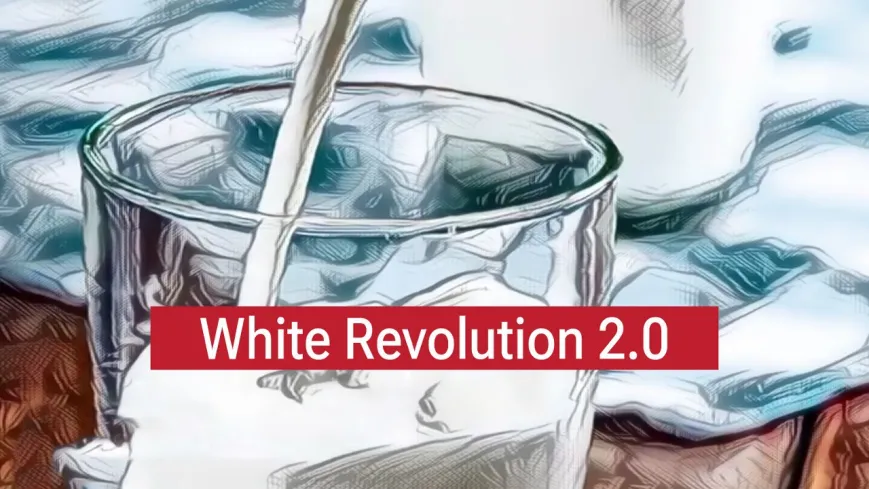White Revolution 2.0 Empowers Women, Fights Malnutrition Nationwide
Why in the news?
- Union Home and Cooperation Minister Amit Shah highlighted White Revolution 2.0’s role in women empowerment, reducing child malnutrition, and creating employment.
- Organic farming will be strengthened, improving soil fertility.
- India is now the world’s largest milk producer, with women generating ₹60,000 crore in Gujarat’s dairy sector.
Expanding Dairy Cooperatives and Employment:
- White Revolution 2.0 aims to expand dairy cooperatives, targeting daily milk procurement of 1,000 lakh litres within five years.
- This initiative will significantly boost rural livelihoods by involving more women and rural producers.
- The cooperative sector will receive renewed focus, impacting villages and districts.
Government Initiatives for Rural Development
- Amit Shah emphasised the NDA government’s creation of a Ministry of Cooperation to revitalise rural economies.
- Shah launched guidelines for forming two lakh new MPACS, Primary Dairy, and Fishery Cooperatives in uncovered areas.
- Fisheries Minister Rajiv Ranjan Singh stressed the initiative’s role in boosting farmer incomes and empowering women.
About the White Revolution (Operation Flood):
- Operation Flood: Created a national milk grid connecting producers to consumers, eliminating middlemen and ensuring fair prices for both.
- Village Milk Cooperatives: Procured milk and provided modern management and technology to farmers.
- Father of White Revolution: Verghese Kurien, founder of Amul, revolutionised India’s milk production.
- Objective: Increase milk production, boost rural incomes, and provide affordable milk to consumers.
Significance of White Revolution:
- Reduced price variations, empowering dairy farmers and boosting rural economies.
- Created a National Milk Grid, connecting 700+ cities, ensuring fair prices for producers.
- Elevated India to the world’s largest milk producer.
White Revolution 2.0:
Role of Cooperative Model in Empowering Women:
- Economic Independence: Provides stable income to rural women.
- Skill Development: Training in dairy and leadership roles.
- Social Empowerment: Promotes gender equality and leadership.
Need for White Revolution 2.0:
- Enhancing Productivity: Advanced techniques for increased milk production.
- Expanding Market Access: Connecting rural producers to broader markets.
- Sustainability: Focus on organic, eco-friendly practices.
- Challenges: Rising inflation, reduced demand, increased production costs, and consumer affordability concerns.
- Steps Taken: Initiatives like Rashtriya Gokul Mission, E-Pashu Haat, Pashu Sanjivani, and National Animal Disease Control Programme promote milk production and support farmers.
Steps taken by india to promote Milk production:
- Rashtriya Gokul Mission (2014): Focuses on conserving and improving indigenous cattle breeds.
- E-Pashu Haat: An e-market portal connecting breeders and farmers for quality germplasm.
- Pashu Sanjivni: Animal health cards and UID for wellness tracking.
- National Animal Disease Control Programme (2019): Aims to eradicate Foot & Mouth Disease (FMD) and Brucellosis.
- Animal Husbandry Infrastructure Development Fund (AHIDF): Supports investments in dairy/meat processing and feed plants.
- National Dairy Development Board (1965): Promotes dairy development through cooperatives.
- National Program for Dairy Development: Enhances infrastructure for milk production, processing, and marketing.
Associated Article:
https://universalinstitutions.com/indias-white-revolution-2-0-the-need-for-action/




